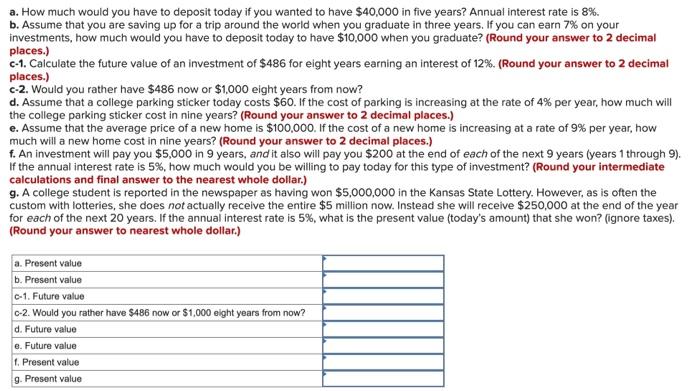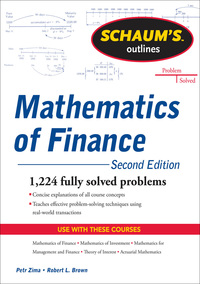a. How much would you have to deposit today if you wanted to have $40,000 in five years? Annual interest rate is 8%. b. Assume that you are saving up for a trip around the world when you graduate in three years. If you can earn 7% on your investments, how much would you have to deposit today to have $10,000 when you graduate? (Round your answer to 2 decimal places.) c-1. Calculate the future value of an investment of $486 for eight years earning an interest of 12%. (Round your answer to 2 decimal places.) c-2. Would you rather have $486 now or $1,000 eight years from now? d. Assume that a college parking sticker today costs $60. If the cost of parking is increasing at the rate of 4% per year, how much will the college parking sticker cost in nine years? (Round your answer to 2 decimal places.) e. Assume that the average price of a new home is $100,000. If the cost of a new home is increasing at a rate of 9% per year, how much will a new home cost in nine years? (Round your answer to 2 decimal places.) f. An investment will pay you $5,000 in 9 years, and it also will pay you $200 at the end of each of the next 9 years (years 1 through 9 ). If the annual interest rate is 5%, how much would you be willing to pay today for this type of investment? (Round your intermediate calculations and final answer to the nearest whole dollar.) g. A college student is reported in the newspaper as having won $5,000,000 in the Kansas State Lottery. However, as is often the custom with lotteries, she does not actually receive the entire $5 million now. Instead she will receive $250,000 at the end of the year for each of the next 20 years. If the annual interest rate is 5%, what is the present value (today's amount) that she won? (ignore taxes). (Round your answer to nearest whole dollar.) Kelly Malone plans to have $42 withheld from her monthly paycheck and deposited in a savings account that earns 12% annually, compounded monthly. If Malone continues with her plan for one year, how much will be accumulated in the account on the date of the last deposit? (PV of \$1, EV of \$1. PVA of \$1, and EVA of \$1) (Use appropriate factor(s) from the tables provided. Round your final answer to 2 decimal places. Round "Table Factor" to 4 decimal places.)








